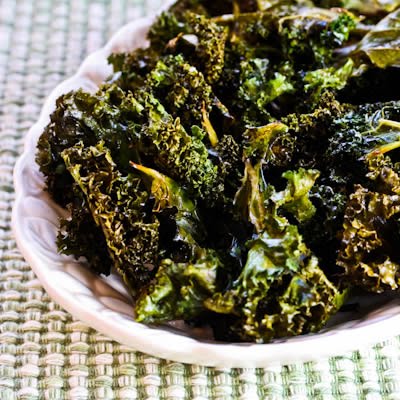
Cronuts are part of the hybrid food revolution
Hybrid food
It seemed that 2013 was the year that food ‘mash-ups’ really took off. The cronut was a prime example of a hybrid snack -croissant-plus-doughnut – that blew in from the States and caused a massive stir among bloggers, foodies and the national press.
Those pesky Yanks continue to pique our curiosity with combinations such as the pizza taco, ice-cream sandwich, guacamole-hoummus and arguably the most hotly anticipated chewable-chimera, the ramen burger; a patty served between two crispy ramen-noodle ‘buns’.
The unstoppable street-food craze in the UK is possibly the largest proponent of hybrid haute cuisine. The uber-cool Kerb in King’s Cross is where you’ll discover the delights of the celebrated Korean Taco made by hosting Kimchinary.
In short, people conducting wild experiments with food for our gustatory delight looks set to be ‘all the rage in 2014’ according to San Francisco hospitality consulting firm Andrew Freeman & Co.
Healthy food
Against the backdrop of the bloated obesity crisis more people are leaning toward fortifying, nutritious food. So expect flexitarianism to be the diet du-jour in 2014. Flexitarians are mainly vegetarian but may, on occasion, eat meat. According to Sioned Quirke, of the British Dietetic Association, many of us will go flexitarian this year. Meanwhile, across the pond, a new study from Datassential found that nearly half of all Americans eat at least one non-meat meal per week, which is up from 40 per cent back in 2007. In the UK, a restaurant that arguably embraces the flexitarianism ethos, is Bruno Loubet’s Grain Store in King’s Cross, which features meat but places a greater emphasis on the amazing things that can be done with the humble vegetable.

Kale chips are a healthy snack that’s easy to bake in the oven
For those without the time, or wallet, to dine out in saintly-style, guilt-free snacks are perhaps the answer, something that Stylus’s Mandy Saven calls “on-the-go nutrition”. Kale continues to gain shelf space in wholefood stores as a crispy snack and there’s even a newly crafted kale lolly popping up, alongside chia seed ‘pods’ and packets of omega 3 and 6 laden seeds. Expect, too, to see more crunchy quinoa cakes on dinner party menus. Stateside, there is NYC’s sugar-free Blue Hill savoury yoghurt, and across many popular UK outlets, the demand for ‘proper’ popcorn, high-protein power balls and instant porridge pots continues unabated.
Nutritionist Vicki Edgson highlights sprouted foods, such as soaked mung beans, split peas, lentils, nuts and seeds, as a growing trend among the health-conscious, and namedrops Eat, Pret and Waitrose – who have added sprouts to their salads – as evidence of this. Similarly, the National Restaurant Association’s What’s Hot 2014 Culinary Forecast cites gluten/wheat-free grains such as buckwheat, amaranth and quinoa as the go-to carbs for 2014.
Upscale food
In 2014, Forbes magazine tells us to ‘watch for old-time comfort foods done with more upscale ingredients’ and pictures a mouth-watering Mac ‘n’ Cheese ‘done’ Italian style with sauteed salami, garlic, peppers, sun-dried tomatoes, and onions as an example.

The $3 slice of artisan toast is popular in Californian cafes
It goes on to quote San Francisco based trend-spotter Andrew Freeman, who says “highbrow versions of classic comfort foods are popping up all over menus”. It was, after all, the very same city that gave birth to the idea of artisan toast, which many say originates from an obscurely located coffee shop called Trouble. Another popular cafe, The Mill, serves toasted sourdough with ‘small-batch almond butter’ at around $3-4 a slice. John Gravois of Pacific Standard magazine predicts that “… artisanal toast is going national”. In fact, there are already many examples that this Californian craze has taken off in the UK capital in places such as the Ginger & White cafes, e5 Bakehouse in Hackney and burgeoning bakery chain Gail’s, where you pay £2.50 for two slices of toast with Lescure butter and organic French jam.
‘Posh Pizza’ is another example of up-scaling, and London now boasts dozens of artisan pizza joints, such as Franco Manca, Voodoo Rays, Brixton’s Agile Rabbit and Forza Win – the rooftop supperclub in Bethnal Green. Forbes reckons the same is happening stateside with the expansion of gourmet pizza chains such as Blaze Fast-Fired Pizza, MOD Pizza and Patxi’s , adding that the formation of the Pizzeria Industry Council is stone-cold (or should that be hot?) proof of an unstoppable trend in 2014.
Robert Colvile of the Telegraph dismisses any cynicism towards the growing popularity of classy comfort food using, as his reference point, the huge gourmet burger obsession over the last few years:
“Cynics will say that this is a bubble, fuelled by culinary fashion and/or a recession-induced yearning for juvenile comfort food. But the marvel of the burger is that while it appears on every menu in the land, the application of top-class meat, top-class bread and top-class cooking turns it into something transcendent.”
Freaky food
The act of eating insects, or entomophagy, is already a serious concern on a global scale and the folk of Oaxaca, in Mexico, have clearly caught the bug with firm favourites such as chapulines, or crickets, consumed as a snack garnished with wedges of lime; and mescal flavoured with worms.
Shows such as I’m a Celebrity… have done nothing to quash the notion of entomophagy as a nauseous novelty, but in 2013 a United Nations Food and Agriculture Organization report called for more edible insect farming on a global scale and, in the same year, popular Mexican restaurant chain Wahaca highlighted the important role of insects, as a highly nutritious and sustainable source of protein, in addressing the global food crisis.
In doing this they trialled a dish called Chapulines Fundido – a fried cricket and chipotle chilli salsa covered in a blanket of melted cheese and topped with crispy, whole-fried cricket carcasses – which they now hope to roll-out permanently. Other restaurants, such as DOM in Brazil and the award-winning Noma in Denmark serve up edible bee larvae and peppered ants respectively, whilst popular websites such as Amazon already stock grab-bag snacks filled with spicy crickets and flavoured mealworms.
In his predictions for 2014, Jay Cheshes—who trained as a chef at the Culinary Institute of America and worked as food critic for both Gourmet and Time Out New York —describes entomophagy as “the new frontier.”
Ethical food
The horse-meat scandal earlier last year clearly led to a growing awareness and desire for healthy, natural ingredients direct from the source. Rising sales in organic food and a demand for more transparent information about the origin of food, indicates that provenance will be a big priority this year. Chicago-based consultants Technomic advise us to “Watch for package logos denoting animal welfare standards and in-restaurant signs documenting supplier sourcing”
Brighton-based blogger, Mike Palmer of Lost in Catering acknowledges this is nothing new but points to how far and wide provenance will be pursued, explaining that “menu development is awash with creatives scouring for even more interesting locally sourced ingredients just to keep up”; citing cult-concerns in the Capital, such as Duck Soup and 10 Greek St, as leading the charge in 2014
Another prediction to be made on the popular Lost in Catering site is the growth of the current movement against food waste, something featured on the What’s Hot 2014 Culinary Forecast; a comprehensive list created by the National Restaurant Association after a survey of 1,300 chefs in 2013. This has been labelled Root-to-stalk Cooking, with leading publications including the eponymous title by Tara Duggan, Vedge by Rick Landau and Kate Jacoby and Vegetable Literacy by Deborah Madison.
This is all about the idea that the commonly discarded parts of vegetable matter – think roots, stalks, peels and seeds – do, well, matter.
Brazilian food
Seth Kugel of Food & Wine reckons that “rare Amazonian ingredients and classically trained chefs are turning São Paulo into one of the world’s most exciting new food scenes”. Combine the patronage of big names like Oriol Castro, Ferran Adrià’s right-hand man at El Bulli, with the exposure the World Cup will provide, and this cuisine looks set to be a global concern in 2014.
Deborah Pankey of Chicago’s Daily Herald describes Brazilian food, with its enticing blend of vibrant flavours, from European, African, Asian and Amazonian cultures as “a big, delicious melting pot.” Ingredients like guava, black-eyed peas, cassava and a spice blend called Tempero Baiano often compliment huge portions of flame-grilled meats, and this neatly follows hot on the heels of the explosion in BBQ over the last two years.
There are already a notable number of Brazilian restaurants in the capital, such as Rodizio Rico in Westbourne Grove and Raizes on Hackney Road.
Temperance bars
Lancashire is arguably the birthplace of the temperance movement and is home to the UK’s last surviving original temperance bar Fitzpatrick’s in Rawtenstall, which first opened in 1890. Last year a new ‘healthy hostelry’ was opened in Botany Bay near Chorley by Emma and Jason Seddon and, in response to popular demand, the couple plan to expand their business across the county.
“We think there is a real gap in the market for an idea like this which is a bit different and a bit quirky” explains Emma, who highlights Mocktails such as Thriller in Vanilla – cream soda, milk and vanilla with raspberry and white chocolate shavings – and the Beetle Juice – blackcurrant and liquorice cordial over ice with mint ice cream – as popular choices.
This popularity is clearly spreading nationwide, with many Temperance/Mocktail bars popping up across the UK, such as The Brink in Liverpool, and Catherine Salway’s Redemption in London. Well established trend-setters like Hawksmoor, Dishoom and Caravan have also got in on the act, by including abstemious additions to their cocktail menus.
